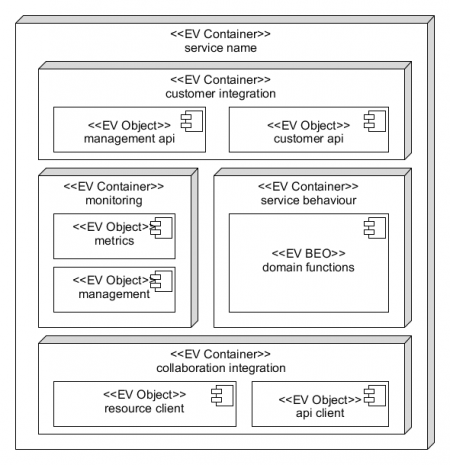Container Structure (Draft)
| The first element to describe in the engineering viewpoint is the structure of the Container Objects that help structuring the systems supporting the RI processes.
An Container Objects is an structural engineering object. Container Objects help structuring the systems supporting the RI processes. There are four possible types of container objects: node, nucleus, capsule and cluster [1]. The ENVRI RM engineering viewpoint recommendation defines the distribution of objects as services. In this configuration, EV objects are distributed in four main containers which group customer integration interface objects, collaboration integration interface objects, management components and domain function components.
|
|
The specific type of each container is left open to allow greater flexibility in distribution at implementation time.
The proposed architectural container structure for the EV is based on the Microservice Architecture [2], [3]. However, the EV does not propose a full migration to Microservices architectures but a gradual approach in which functionalities are decoupled and provided as services in a piecemeal fashion. For instance, functionalities which are always dependent on external services such as data identification and citation, or common functionalities which can be shared among various RIs, such as processing, cataloguing, provenance or or AAAI.
- ↑ See Linington et.al. p. 94-95 [37].
- ↑ Sam Newman. (2012). Building Microservices, Designing Fine Grained Systems. O’Reilly, ISBN-10: 1491950358
- ↑ Neal Ford Building Microservice Architectures. ThoughtWorks. Voxxed days Vienna 2016. Video https://www.youtube.com/watch?v=pjN7CaGPFB4, slides: http://nealford.com/downloads/Building_Microservice_Architectures_Neal_Ford.pdf
